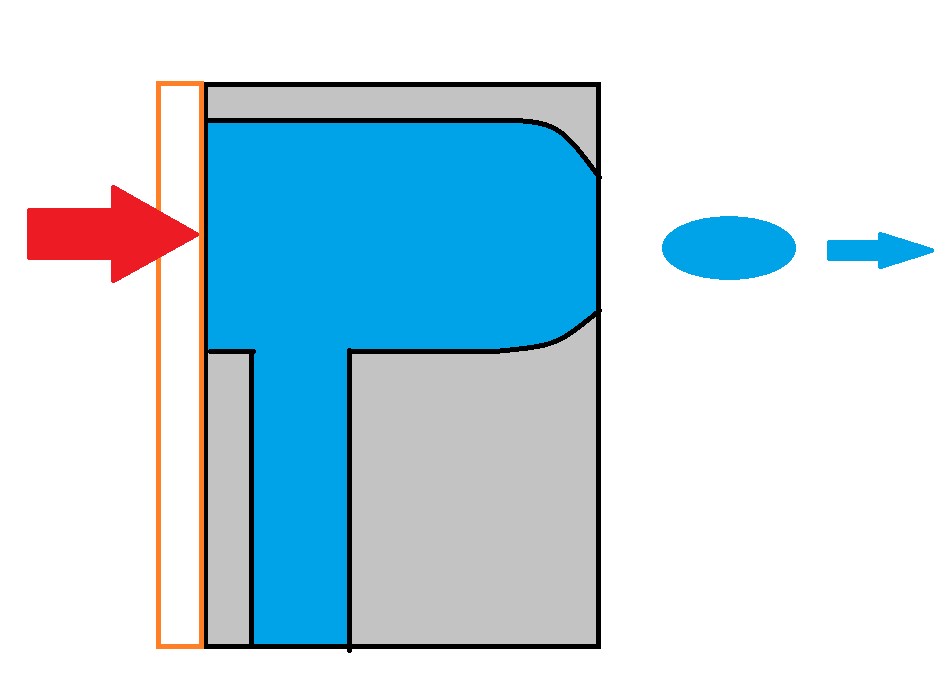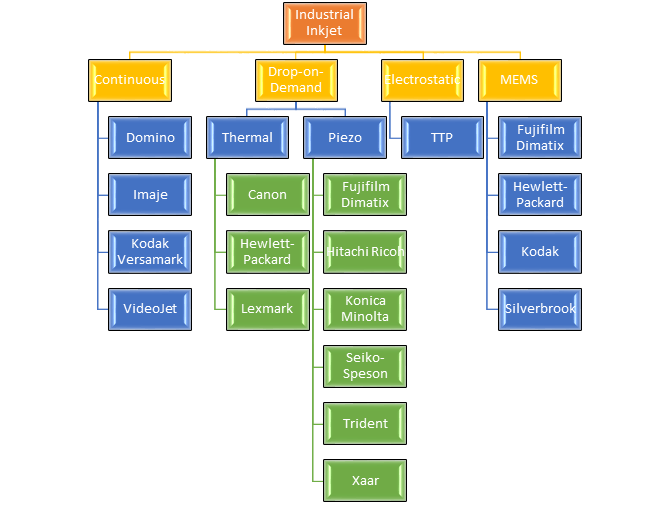When conceptualizing inkjet technology, it is incredibly easy because it is essentially a digitally controlled ejection of drops of fluid from a print head onto a film or substrate. The manner in which the ejection happens, varies in two primary ways. The first being industrial inkjet, and is most commonly referred to as CIJ or Continuous Inkjet, where the second way to classify it is drop-on-demand inkjet. Variants of each of these styles are numerous and generally are only initiated for unique solutions.
Continuous inkjet ejects drops continuously, where the droplets are directed directly to the substrate, or in some instances to a collection tank for recirculation, recycling, or reuse. Drop-on-demand only produces and ejects droplets when required.

Continuous Inkjet
Continuous inkjet is stigmatized in the printing industry as a primitive or amateur type of printing. Continuous inkjet printers account for roughly 10% of the printer sales in North America in 2016. This is primarily and almost exclusively used in the marking and coding of products and packages, where high volumes and fast line speeds are critical to manufacturing process performance. CIJ utilizes a pump which pushes fluid from a reservoir through small nozzles to produce a continuous stream of droplets between (50kHz and 175kHz) via vibrating piezo print head crystals. The print quality and resolution is determined by how the droplets are charged through an electrostatic field, and deflected using a magnetic plate or field. The charge on the droplet, the magnetic field strength both determine where the droplet lands on the substrate, or if not charge is applied, the droplet will be directed to reflow through the reservoir conserving and recycling the unused ink. One of the unique benefits of CIJ printing is the fact that the droplets are pumped through the system at speeds often ten times faster than other methods which enables the substrate to be printed upon from a further distance away. Finally, the benefit of using a solvent based ink, allows for compatibility with a wider range of substrates including those with high surface energies.
The main drawback of CIJ is that most people consider this technology to be bad for the environment due to solvent being driven off in the curing process. While, this may be true, often times the alternative method of printing these labels or specialty signage have a far worse impact on the environment.
In the above image, pressure (red arrow) is applied to the heating plate (orange outline) in order to force the droplet of ink out through the print head nozzles.
Drop-on-demand inkjet
DOD inkjet is by far the most common and broadest classification of inkjet printing. This is most commonly used by companies such as Hewlett-Packard, Fujifilm, Lexmark, and Canon. As the large brand names suggest, these are most commonly used in consumer products such as desktop printers, but in the recent history has been proving to be useful in industrial printing as well. DOD print heads such as, thermal, piezo, and electrostatic use large pulses of pressure, with the differentiating factor being how the pressure is generated. Many companies may consider MEMS to be a unique method of drop-on-demand printing, but in the end it is still a subcategory based upon piezo or thermal architecture.
DOD droplets can be formed by rapidly heating a resistive element in a small enclosed chamber containing the ink. In this scenario the heated element is increased to 350°C to 400°C, which will cause a thin film of ink above the heater to vaporize. The vaporization causes a bubble to create a pressure pulse that forces a droplet of the ink through the print heads nozzle. Upon relaxation, the small chamber is then backfilled with more of the ink which will then be jetted through the nozzle onto the substrate as well.
The greatest advantages of DOD inkjet are the ability to create extremely fine droplet sizes which translate to resolutions observed greater than 1000p. Additionally, the high nozzle density due to the creation of droplets via pressure allows for more compact devices, lower print head prices, and reduced production costs. The main disadvantage is most commonly stated to be the limited inks available for vaporization. Each of the components in an inkjet droplet must be able to withstand high temperatures during vaporization without being adversely impacted upon solidification on the printed surface.
